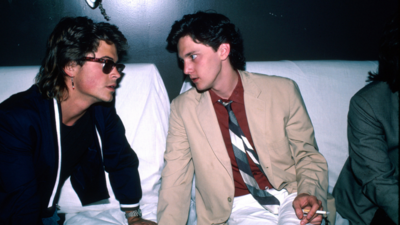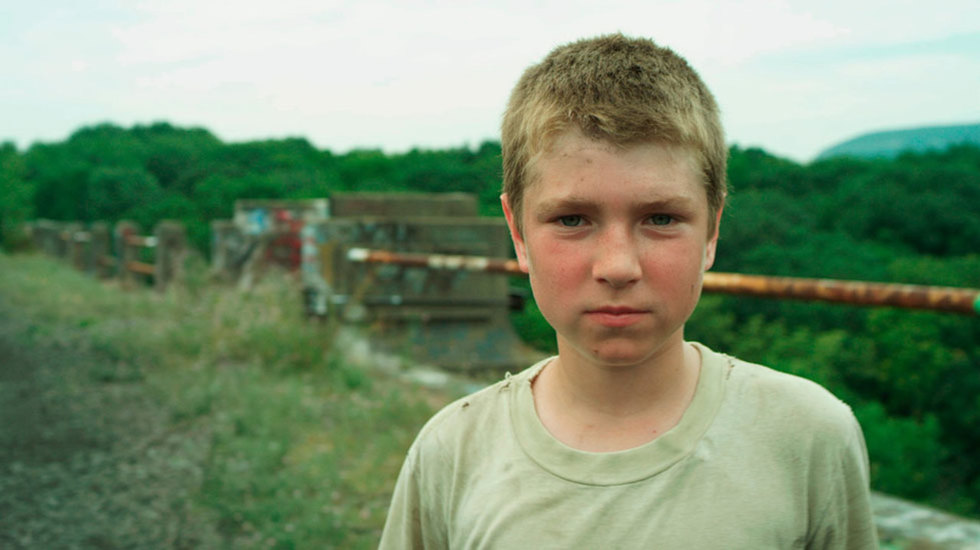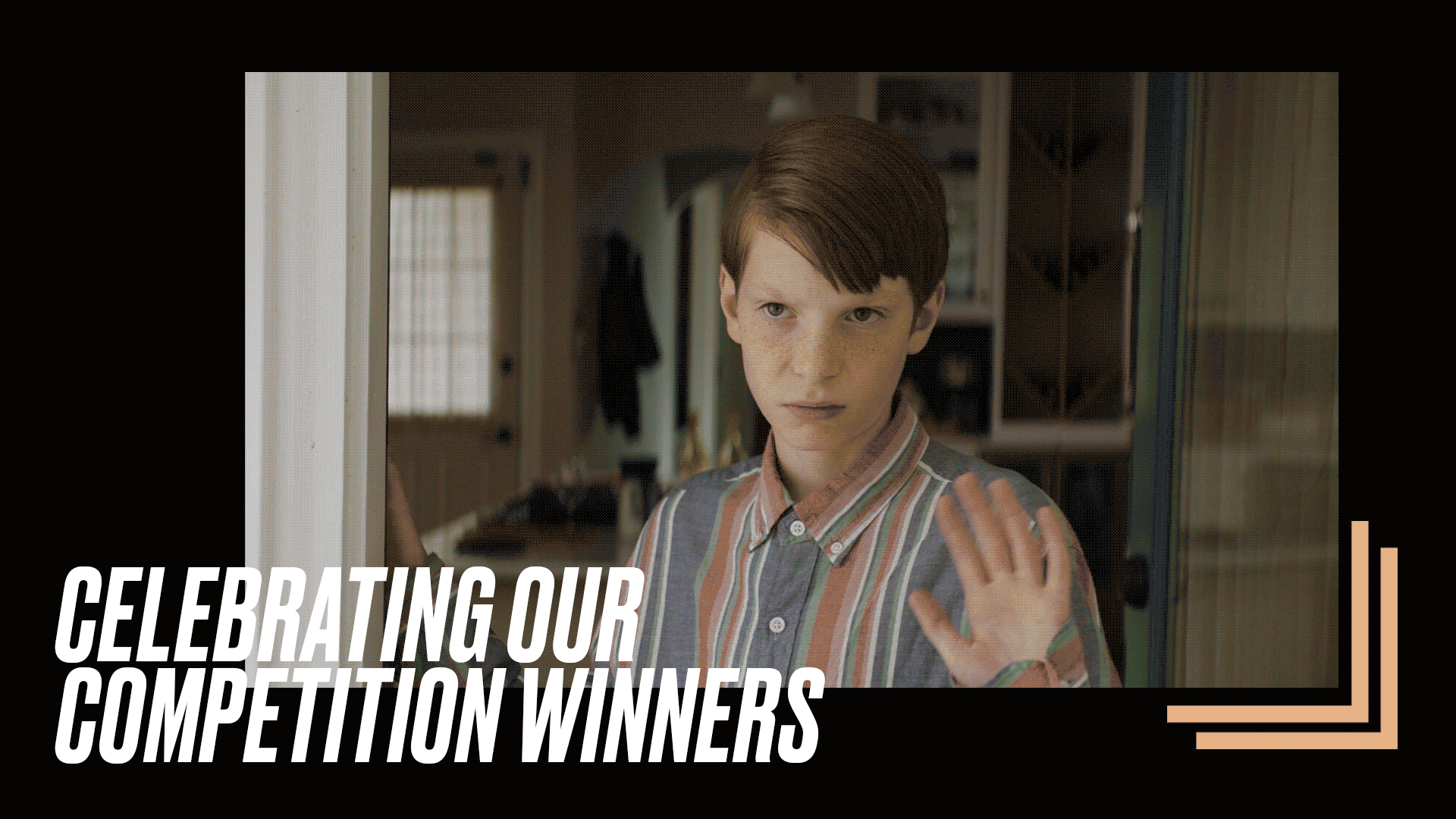
BY KAREN KEMMERLE |
‘Hide Your Smiling Faces’ Director Daniel Patrick Carbone on Brotherhood in the Face of Death and Violence
The breathtaking film debut from Daniel Patrick Carbone, 'Hide Your Smiling Faces,' explores male adolescence against the backdrop of rural New Jersey in the face of an unforeseeable accident. The writer/director explains why filming children and animals near water can sometimes be a good thing.

Tribeca: Tell us a little about Hide Your Smiling Faces. What inspired you to tell this story?
Daniel Patrick Carbone: I wanted to tell a story about young people, specifically young boys, showing them in a more realistic and honest way than I was used to seeing. I wanted a film about being young the way I remember it. Certain aspects of the film are based on my own childhood, including my relationship with my brother, my relationship with the landscape, and some difficult moments that I struggled to understand at various times in my life.
I was inspired by my own foggy memories and the story began to unfold as I tried to make sense of the past from the vantage point of adulthood. Of course, much of it still doesn’t make sense and never will. I think that’s what I love most about adolescence. It’s a sort of an unsolvable puzzle.

Tribeca: Hide Your Smiling Faces looks at male adolescence in a completely naturalistic and unpretentious manner. What made you want to explore this delicate time in a boy’s life in the context of a story that involves death and violence?
DPC: Most films about male adolescence focus on chasing girls or getting into trouble. I wanted to focus on figuring out who you are and how you fit into the small universe you exist in. Death and the idea of mortality is an important part of that — for me, the death of my grandparents, of a college roommate, of my family’s dog, of wild animals around my neighborhood all triggered my own sense of mortality. Death was something that seemed to be present at many important times in my own childhood, and I wanted to make it a central focus of this story.
Tribeca: Hide Your Smiling Faces is a sweeping view of a New Jersey landscape that most people wouldn’t necessarily associate with the state. What made you choose Sussex County as your location? What role does nature play in your film?
DPC: I’m a staunch New Jersey defender. I grew up in Sussex County, where almost the entire film was shot. It’s a gorgeous area and one that most people don’t get to see. The house the family lives in is the childhood home of one of my best friends, and most of the places the boys go to hang out in the film are places I hung out at as a kid. I think this helps give the movie a familiar and lived-in feel. Nature plays a huge role, both visually and as a means to give context to where these characters are emotionally at different points throughout the story.
In film school you’re told never to shoot with kids, animals, or near water. I took that as a personal challenge.
Tribeca: A large part of the success of Hide Your Smiling Faces is owed to Nathan Varnson and Ryan Jones, who play the brothers in the film, Eric and Tommy. How did you find them? Why did you decide to go with mostly unknown actors?
DPC: Ryan and Nate are the backbone of this film, and I am in awe of their performances each time I watch it. We couldn’t afford a casting director so we put out an open call for young actors on Craigslist, Mandy, Backstage, etc., and saw about 100 kids. Ryan and Nate blew us away.
Ryan has an innate professionalism that is decades beyond his age, and Nate has this raw energy about him that gave Eric’s character a quiet tension. I think unknown and first-time actors, especially kids, often give more honest performances than professional actors. They give stories like this an extra layer of authenticity.
Tribeca: All the boys featured in the film give such unfettered performances. How much of the dialogue was on the page and how much was improvised? What made you decide to go for a vignette-style format?
DPC: All of the kids really surprised me with how willing they were to inject their own lives and personalities into these characters. I could never write dialogue for kids as well as actual kids can so when it came to production, almost everything was done as improvisation based on the central ideas in the script. I think this freedom helped them concentrate on more important aspects of their performances, like relating personally to the events in the film and interacting naturally and spontaneously to the other actors around them.
The vignette style was always there, from the earliest script, as a means of focusing on only the moments that emphasized the themes of the story. How people get from point A to point B wasn’t as important to me.

Tribeca: I couldn’t help but be reminded of movies like Stand by Me and Mean Creek while watching your film. What filmmakers/movie inspired you while you were writing Hide Your Smiling Faces?
DPC: Watching Stand By Me with my family is one of my earliest movie memories. I actually haven’t seen that film in probably ten years but it no doubt had a large subconscious influence on this film. I was very inspired by some of my favorite filmmakers’ first films like Ratcatcher, George Washington, and Gummo. These films also focus on young people, exploring their worlds in unique ways, and letting them tell their own stories from their own point of view.
Tribeca: Not to give anything away, but a black bear plays a very important role in one scene of your film. How did you acquire this bear? What was it like shooting with the animal?
DPC: Her name is Adrien. We traveled to upstate New York to be able to shoot with her on her owner’s property. It was a stressful day but also really wonderful and strange. Being that close to an animal like that is hard to describe. I love animals and feature them heavily in all of my films. In film school you’re told never to shoot with kids, animals, or near water. I took that as a personal challenge.
I wanted a film about being young the way I remember it.
Tribeca: Hide Your Smiling Faces was completed thanks in part to the aid of a successful Kickstarter campaign. Do you have advice for filmmakers who might consider using the site for fundraising?
DPC: Kickstarter was used to raise a small portion of the film’s budget, which was a huge help. Even more importantly though, it played an important role in keeping the film’s biggest fans up to date with the production. It’s a powerful way to connect with people who really believe in a project.
My advice would be to never post anything on Kickstarter that you won’t be happy having up for the rest of the film’s life. Any video content, production stills, or partially finished artwork will live with the film forever so be careful what you make public at such an early stage. It may not represent the finished film later.
Tribeca: What are you most looking forward to at Tribeca?
DPC: New York audiences are incredibly smart. It’s a little daunting showing Hide Your Smiling Faces to a theater of film-loving New Yorkers. I’m excited to see the reaction in our home city.
Tribeca: What makes Hide Your Smiling Faces a Tribeca must-see?
DPC: Over the last few years, Tribeca has done an amazing job programming some smaller, truly independent films alongside the larger, star-driven ones across the various sections. I would say we definitely fall into that category this year. I think Hide Your Smiling Faces represents modern, low budget, no compromise filmmaking. It’s truly an honor to be able to showcase all of this emerging talent and first-time actors on a stage this large.
Hide Your Smiling Faces premieres Sunday, April 21, at the AMC Loews Village 7. For more information and additional showtimes, please visit our Film Guide listing.

